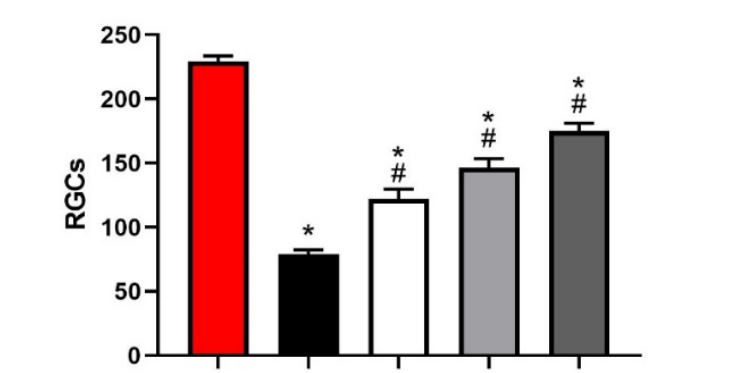Tetrahedral Framework Nucleic Acid Technology in Ophthalmic Disease Treatment
2024-06-26
The globally pioneering
tetrahedral framework nucleic acid drug delivery system has successfully
completed mechanism studies, cellular pharmacology validation, and non-clinical
animal model validation in addressing the challenges of retinal neovascular diseases,
achieving groundbreaking results. This delivery system was developed by
Professor Yunfeng Lin’s team, the first award winner from mainland China at the
IADR, and industrialized by Professor Delun Luo’s team at Yunhai Biotechnology.
Over 20 years ago, when
Professor Yunfeng Lin, one of the founders of Yunhai Biotechnology, was a newly
emerging medical researcher, he was introduced to framework nucleic acids by
Academician Chunhai Fan. This marked the beginning of his deep involvement in
developing novel drug delivery systems and nucleic acid drug research. In 2015,
Professor Yunfeng Lin met Professor Delun Luo, the project leader of the highly
prestigious ophthalmic bioproduct “Conbercept” in China. After intense
discussions, framework nucleic acids, initially met with skepticism and
verification, were rediscovered and led to the creation of “Yunhai
Biotechnology,” akin to the “base pair complementarity” in genetics. This
endeavor epitomizes the goal of “benefiting more patients” and reflects the
essence of perseverance in medical research. Recently, Yunhai Biotechnology has
shared its groundbreaking research findings on major blinding eye diseases,
such as retinal neovascularization.
Retinal
neovascularization is a major cause of irreversible vision impairment and
blindness for millions of patients worldwide. It includes several blinding
retinal diseases such as retinopathy of prematurity (ROP), proliferative
diabetic retinopathy (PDR), and retinal vein occlusion (RVO). Current
treatments include anti-vascular endothelial growth factor (VEGF) drugs and
retinal laser photocoagulation, but both have significant drawbacks. For
example, inhibiting VEGF signaling may affect the growth of normal retinal
blood vessels, and laser treatment can cause retinal tissue damage and
complications. Furthermore, ischemia and hypoxia can further cause irreversible
damage to retinal nerve cells. To date, there is still a lack of safe and
effective methods for neuroprotection. Therefore, there is an urgent need to
optimize treatment strategies for retinal neovascularization.
“If we compare the eye
to a camera, the current major causes of blindness that are difficult to
address in global ophthalmology have shifted from traditional 'optical path
diseases'—which affect light transmission and zoom projection—to 'visual
pathway diseases'—which impact imaging and transmission. The first station of
the 'visual pathway' is the retina. The human retina is the most intricate
photoreceptive and visual processing system, composed of hundreds of millions
of photoreceptor cells and connected to the brain via the optic nerve. Due to
the rich vascular network and numerous non-regenerable nerve cells in the
retina, any damage can directly lead to visual impairment or even complete loss
of vision. Diseases causing retinal damage, such as age-related macular
degeneration, hereditary retinal degeneration, and diabetic retinopathy, have
become major causes of blindness in humans.”
Professor Xiaoyan Ding,
who served as the clinical director at the Zhongshan Ophthalmic Center for many
years, has deeply felt the frustration of having no medication available for
patients. In the retina disease clinic, whenever a patient asks her, “Doctor,
will I go blind?” she can only offer comfort by saying, “No, medical technology
is continually advancing, and there will definitely be opportunities.”
Global innovations in
ophthalmic diagnostic and therapeutic devices and drugs are continually
emerging, including new technologies and drugs such as vitrectomy equipment,
cataract phacoemulsification devices, various laser diagnostic and therapeutic
tools, prostaglandin-based anti-glaucoma drugs, and anti-VEGF drugs. More
importantly, China has nearly synchronized each technological breakthrough,
providing thousands of patients with the chance to regain their sight and
inspiring Chinese ophthalmology research to delve deeper.
In the face of research
and industrial development, all preparations are never enough; the only thing
one can prepare for is “persistence.”
In the retinal RIR rat
model, the experimental drug significantly increased the number of retinal
ganglion cells (RGCs) across three dose groups, with statistically significant
differences. This suggests effective treatment of RGC loss due to ischemia-reperfusion
and demonstrates a favorable dose-response relationship.

Figure 1: Retinal Ganglion Cell Count
From left to right:
Normal Group, Negative Control Group, Low Concentration Experimental Drug
Group, Medium Concentration Experimental Drug Group, High Concentration
Experimental Drug Group.
In fact, the retinal OIR mouse model shows that the experimental drug not only inhibits the area of pathological neovascularization (Figure 2) but also promotes physiological vascular development in areas of vascular occlusion (Figure 3). Therefore, the experimental drug not only alleviates abnormal blood vessel growth but also aids in the restoration of the normal vascular system in ischemic retinas by reducing vascular occlusion. This study highlights the innovative potential of the experimental drug as a treatment option for ischemic retinal diseases, which are a major cause of blindness in both developed and developing countries worldwide.

Figure 2: Retinal neovascularization area

Figure 3: Retinal vascular occlusion area
From left to right:
Normal Group, Negative Control Group, Positive Control Group, Drug 1 Group,
Drug 2 Group, Experimental Drug Group.
At Yunhai
Biotechnology, every individual engaged in medical research and industrial
development harbors a deep-seated ideal, and it is this ideal that inspires
them to persist through the challenges of entrepreneurship. Every step of
Yunhai Biotechnology's growth is achieved with the support of various upstream
and downstream resources and the collective efforts of many people. The company
looks forward to the next breakthrough of the tetrahedral framework nucleic
acid (tFNA) delivery system in addressing clinical challenges related to
retinal diseases.


